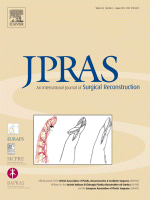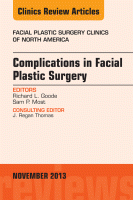Freshwater, M. F.
Journal of Plastic, Reconstructive & Aesthetic Surgery, 2010-08-01, Volúmen 63, Número 8, Pages 1399-1400
 The latest iteration in the Sherlock Holmes movies arrived in America on Christmas Day. Digital effects allowed its director, Guy Ritchie, to have slow motion sequences that showed how Holmes used his senses to deduce facts about other characters. Holmes was a fictional detective, but we plastic surgeons are fortunate to have been taught Gillies’ principle ‘Observation is the basis of surgical diagnosis.’ This was Gillies’ first principle and the basis of his others. He believed that without a proper diagnosis surgical disaster loomed and went so far as to say, ‘Mistakes in diagnosis due to inadequate examination are perhaps the commonest cause of indifferent treatment’.
The latest iteration in the Sherlock Holmes movies arrived in America on Christmas Day. Digital effects allowed its director, Guy Ritchie, to have slow motion sequences that showed how Holmes used his senses to deduce facts about other characters. Holmes was a fictional detective, but we plastic surgeons are fortunate to have been taught Gillies’ principle ‘Observation is the basis of surgical diagnosis.’ This was Gillies’ first principle and the basis of his others. He believed that without a proper diagnosis surgical disaster loomed and went so far as to say, ‘Mistakes in diagnosis due to inadequate examination are perhaps the commonest cause of indifferent treatment’.
 Rhytidectomy remains a challenging surgical procedure for even the most experienced aesthetic plastic surgeons. The challenges are compounded by complications that are inherent to this procedure and place added pressure on the doctor-patient relationship. Expectations for both parties are high and the margin for error nil. This article presents a personal approach to the avoidance and management of complications associated with facelift surgery. It presents the author’s personal approach as a plastic surgeon in the practice of aesthetic plastic surgery over the past 25 years. Clinical pearls are provided to obtain optimum results in rhytidectomy and limit associated sequelae.
Rhytidectomy remains a challenging surgical procedure for even the most experienced aesthetic plastic surgeons. The challenges are compounded by complications that are inherent to this procedure and place added pressure on the doctor-patient relationship. Expectations for both parties are high and the margin for error nil. This article presents a personal approach to the avoidance and management of complications associated with facelift surgery. It presents the author’s personal approach as a plastic surgeon in the practice of aesthetic plastic surgery over the past 25 years. Clinical pearls are provided to obtain optimum results in rhytidectomy and limit associated sequelae. Late haematomas and seromas (≥4 months postoperatively) in breasts with silicone prosthesis have been reported. Since 2001, there have only four patients with such delayed complication visiting our hospitals. The purpose of this literature review and our case presentation is to have more understanding about the clinical symptoms, surgical managements and relationship with implants for this late complication.
Late haematomas and seromas (≥4 months postoperatively) in breasts with silicone prosthesis have been reported. Since 2001, there have only four patients with such delayed complication visiting our hospitals. The purpose of this literature review and our case presentation is to have more understanding about the clinical symptoms, surgical managements and relationship with implants for this late complication.




 Sitio web publicado el
Sitio web publicado el
Los lectores comentan